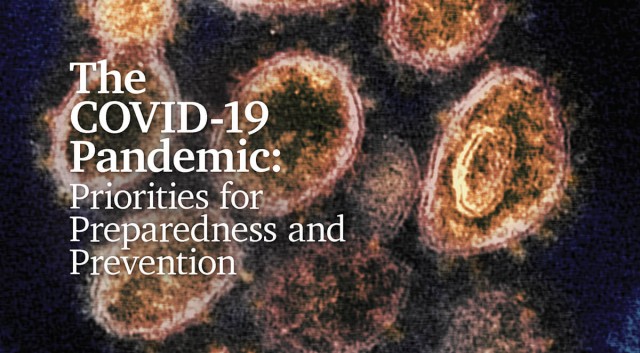Deprecated: Array and string offset access syntax with curly braces is deprecated in /home/hangenix/public_html/administrator/components/com_easyblog/includes/stylesheet/compilers/lessc.php on line 777
Deprecated: Array and string offset access syntax with curly braces is deprecated in /home/hangenix/public_html/administrator/components/com_easyblog/includes/stylesheet/compilers/lessc.php on line 1912
Deprecated: Array and string offset access syntax with curly braces is deprecated in /home/hangenix/public_html/administrator/components/com_easyblog/includes/stylesheet/compilers/lessc.php on line 2619
Deprecated: Array and string offset access syntax with curly braces is deprecated in /home/hangenix/public_html/administrator/components/com_easyblog/includes/stylesheet/compilers/lessc.php on line 2673
The "Healthy Hands" Blog
Could Adherence to Proper Hand Hygiene by Healthcare Professionals, Commercial Players and the General Public Mitigate the Spread of COVID-19 or Other Pathogens?
The team at HanGenix was excited to have an article published in the April 2020 issue (vol. 2, no. 4) of Healthcare Hygiene Magazine – a monthly publication providing news, information and education for all stakeholders in infection prevention. This very timely article discusses the lack of compliance with hand hygiene protocols among healthcare professionals, commercial players and the public at large, and the implementation of training and technology as a critical combination in helping to drive accountability, discipline and behavior change into the future.
by Robert P. Lee; Francis X. Blais, DO, MACOI; and Eleanor Savariau, MBA, BHSA, RN
Article
Viruses do not spread without hosts who participate, inadvertently carrying the pathogen to others. Most people define hand hygiene as handwashing, but hand hygiene is more than just handwashing. Whereas handwashing is our everyday routine of washing our hands when soiled or after using the restroom, hand hygiene is designed to significantly reduce the microorganisms present on the hands to prevent the transmission of hand flora to others during patient care. In the healthcare arena, hand hygiene is a science of protocols; for example, performed before and after patient contact, utilizing either soap and water or alcohol-based hand sanitizer for a specific minimal time interval. Another example is the significant difference in surgical hand hygiene prior to operative procedures and basic hand hygiene in routine healthcare activities.
The Centers for Disease Control and Prevention (CDC) and World Health Organization (WHO) note that healthcare hand hygiene compliance is around 40 percent.1-2 Hand hygiene in the commercial and public sector is around 6 percent to 20 percent.3 Physicians, compared to other healthcare personnel, have the lowest hand hygiene compliance, at approximately 30 percent.4
Surface cleaning and hand hygiene work in tandem to prevent cross contamination. COVID-19 is an invisible enemy, and consequently, prevention of transmission requires discipline, improved training and education, and technology to enhance compliance and improve and sustain maximum adherence. Studies demonstrate that technology can improve hand hygiene compliance by 50 percent in the short term.5 Busy healthcare personnel require subtle reminders, reinforcement and feedback to sustain high compliance, similar to seatbelt reminders, back-up alerts, etc. Without discipline, proper education and training, and technology to monitor adherence and provide feedback, are we neglecting to adhere to the critical measures that can ameliorate and hopefully prevent transmission of COVID-19 in both our communities and our healthcare facilities?
Are we underselling the simplicity of proper hand hygiene as an essential and critical intervention to control pathogen acquisition and consequent transmission to people and surfaces? We are in a war with microbes and our major preventive weapon, hand hygiene, is employed at a suboptimal rate in the healthcare sector as well as in the commercial and public sphere. Consequently, are we providing the general public with the most accurate, evidence-based information and data that they can employ to avoid COVID-19 infection as well as prevent transmission to others, including the most vulnerable?
In addition to readily available personal protective equipment (PPE), healthcare workers also need to both understand and employ hand hygiene based on the most effective method to avoid not only the acquisition but also the transmission of the virus to others, both within and outside the healthcare arena. The loss of healthcare personnel to a COVID-19 infection results in one less critical member of the team essential to dealing with this global pandemic as cases progressively increase in the U.S.
Can technology and training help? It is well documented that the current manual method of measuring and reporting hand hygiene compliance is less than ideal, fraught with errors, is time-consuming, expensive and probably outdated.6 Are we providing our healthcare personnel with the latest and most effective tools to help them do their jobs? It often seems that infection prevention and environmental services (EVS) departments rank the lowest when assessing the need for funding until we find ourselves amid a crisis. Technology has shown 50 percent improvement in hand hygiene compliance with a correlation with consequent decreases in hospital-acquired infections of 50 percent to 65 percent.7
As technology is employed in many everyday functions, the same technological solutions could help to address the COVID-19 pandemic and probable future crises. We should not underestimate the value of the dedicated infection prevention and environmental services groups and should facilitate success through recognition of their critical role in addressing our current crisis as well as potential future events to protect patients and our healthcare personnel.
For healthcare personnel, deploy or revisit enhance training and education using the WHO 5 Moments approach to hand hygiene. As noted above, currently education and training is often inconsistent, confusing and focused on the wrong approach to hand hygiene. The Association for Professionals in Infection Control and Epidemiology (APIC) blog suggests the same issue, addressing confusing and inconsistent standards. The most effective approach is standardized training employing the WHO 5 Moments approach to hand hygiene.
The current standard of care to monitor hand hygiene compliance in most healthcare facilities is the secret shopper approach, providing compliance data for only 0.4 percent of hand hygiene opportunities. This is far from ideal compared to 24/7 assessment of hand hygiene compliance with electronic monitoring. Technology can enhance adherence and provide accurate data regarding areas of needed retraining and reinforcing hand hygiene success. Reminders are effective in healthcare, just as they are in other industries such as manufacturing and the airline industry. Technology can help ameliorate chaos and confusion.
For the general public, improve hand hygiene education and training directed to both the use of appropriate hand hygiene solutions and duration of hand hygiene, reinforced with repeated public service messaging.
For commercial players (airlines, airports, cruise ships, restaurants, etc.), enhance education and training similar to programs for the general public but as standardized training required of all employees with reinforcement on a regular schedule as a requirement of employment, similar to required programs in the healthcare setting. Additionally, employ electronic monitoring of cleaning and hand hygiene performance with reminders, reinforcement and assessment of compliance.
We are all challenged by this pandemic, and it is critical that we have the necessary tools to meet this enemy in the most effective way possible. Training, reminders, feedback, awareness and implementation of the procedures that are most effective in protecting all of us, at home or on the front lines of healthcare, are the key to success. All these interventions should be both based on best practices and shown to be the most effective. Accountability, discipline and behavior change will help us deal with the current situation and hopefully prepare us for whatever next pathogen or event challenges our world. Although unique for our generation, this is not the first and will not be the last pandemic. We need to use the best information available, learn from our daily challenges and be ready for the next time. As always, it is not if, but when.
As seen in the April 2020 issue of Healthcare Hygiene Magazine
References:
1. World Health Organization (WHO). WHO Guidelines on Hand Hygiene in Health Care: First Global Patient Safety Challenge Clean Care Is Safer Care. Vol. 41, No.5, Supplement, Pages 56-S11. May 2013. World Health Organization (WHO). WHO Guidelines on Hand Hygiene in Health Care. 2009.
2. Centers for Disease Control and Prevention. Hand Hygiene Basics. Available at: http://www.cdc.gov/handhygiene/Basics.html. Accessed December 9, 2011.
3. Nicolaides, C., Avraam, A., Cueto-Felgueroso, L., Gonzales, M.C., Juanes, R. (2019) Hand-Hygiene Mitigation Strategies Against Global Disease Spreading through the Air Transportation Network. Risk Analysis DOI: 10:1111/risa. 13438.
4. Borchgrevink CP, Cha J, Kim S. Hand Washing practices in a college town environment. J Environ Health, 2013 Apr; 75(8):18-24.
5. Boyce JM. Measuring Healthcare Worker Hand Hygiene Activity: Current Practices and Emerging Technologies. Infection Control and Hospital Epidemiology Oct 2011, Vol. 32, No. 10.
6. https://www.infectioncontroltoday.com/hand-hygiene/top-5-hand-hygiene-trends-2019
7. Emily E. Sickbert-Bennett, Lauren M. DiBiase, Tina M. Schade Willis, Eric S. Wolak, David J. Weber, William A. Rutala. Reduction of Healthcare-Associated Infections by Exceeding High Compliance with Hand Hygiene Practice. E merging Infectious Diseases • www.cdc.gov/eid • Vol. 22, No. 9, September 2016.

 Close
Close Menu
Menu
